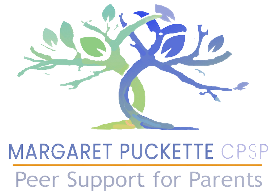Marijuana’s effect on adolescents is more serious than many realize, especially for those with behavioral disorders. This is no exaggeration; marijuana can lead to psychosis and long-term cognitive impairment for your troubled child. Numerous recent research studies show that marijuana has a more damaging effect on the young brain than is generally understood. The THC in marijuana is psychoactive, which means it can affect your child’s unbalanced brain chemistry more than the general population. Serious depression, anxiety, paranoia, and psychosis can be triggered in children with latent psychiatric vulnerabilities. (Additional marijuana research going back to 2004 is at the end of this article).
Just because marijuana is plant-based does not mean it is safe. It has dangerous side-effects like any other psychoactive drug.
Marijuana legalization has deeply concerned pediatric psychiatrists and other specialists in child, adolescent, and young adult mental health treatment. Up until the their early 20’s, young people’s brains undergo radical changes as part of normal development. Neurons are “pruned” to reduce their number (yes indeed, one can have too much gray matter to function as an adult). Pruning occurs rapidly in teenagers–think about it, in addition to puberty, a lot of nonsensical teenage behavior can be explained by this. The THC in marijuana, the part responsible for the high, interferes with the normal pruning process.
When marijuana is ‘medicinal,’ a doctor determines a safe dose. When it is ‘recreational,’ there is no such limit… teen users don’t realize there should be.
Let’s talk about a safe “dose,” which is different for each person.
THC is known to relieve anxiety in smaller doses and increase it in larger; this is due to its bi-phasic effects, meaning it can have two opposite effects in high doses. Furthermore, some people are genetically predisposed to experience anxiety with cannabis as a result of brain chemistry.”
–What are the Side-Effects of High THC Cannabis. Bailey Rahn, 2016
Recent evidence that marijuana leads teenagers to harder drugs
“The study of the lives of more than 5,000 teenagers produced the first resounding evidence that cannabis is a gate way to cocaine, amphetamines, hallucinogens and heroin.” Read the full story
“Teenagers who regularly smoke cannabis are 26 times more likely to turn to other drugs by the age of 21. It also discovered that teenage cannabis smokers are 37 times more likely to be hooked on nicotine and three times more likely to be problem drinkers than non-users of the drug.”
–Steve Doughty and Ben Spencer, Daily Mail, London UK, June 7, 2017
Now let’s talk about long-term. Our troubled children are already slipping behind their peers in important ways, which can include school; emotional maturity (certainly); and physical health (such as gut and digestive problems). Marijuana will add to your teen’s problems by causing lethargy, impaired memory, and cognitive delays.
We can’t pretend or assume marijuana is safe anymore, regardless of its legality or medicinal uses.
I found this research result extremely worrisome:
“Increasing levels of cannabis use at ages 14-21 resulted in lower levels of degree attainment by age 25, lower-income at age 25, higher levels of welfare dependence, higher unemployment, lower levels of relationship satisfaction, and lower levels of life satisfaction.”
–Cannabis use and later life outcomes. Fergusson DM, Boden JM, Addiction; Pp: 969-76; Vol: 103(6), June 2008
I worked with adolescents in residential care and in the juvenile justice system who regularly used marijuana when they could. A young man on my caseload grew noticeably depressed after he started smoking regularly, and his anxiety, irritability, and paranoia increased. He said that smoking helped him feel better, but he couldn’t observe what I and other social workers observed over time. Smoking marijuana, ironically, was temporarily relieving him of its own side-effects.
A clarification about the two substances in marijuana – The plant Cannabis sativa has two chemicals of interest:
- Cannabidiol (CBD) = Medical marijuana: the molecule is safe for a variety of treatments, such as relief of pain and nausea, and it is approved by the American Medical Association;
- Tetrahydrocannabinol (THC) = psychoactive “high”: in those who are vulnerable it, triggers psychotic symptoms, paranoia, depression, anxiety, and memory loss.
Your troubled child’s future is already at-risk, why worsen it with marijuana use?
All children need the same warnings that we give about alcohol and street drugs to include marijuana. Whether you live in a jurisdiction where marijuana is legal or not, teens can and will find it. It may not be possible to completely prevent your troubled child from using, but your caring persistence can reduce or end its use.
Please share this information with other parents.
–Margaret

I totally agree. Teens become “troubled” because there is a deeper cause. It could be an abusive family, it could be anything. They turn to marijuana or other substance to forget their troubles. That’s when they become hooked. And that’s when all else fall apart or become worse like family relationships, school, health. These teens need all the support they can get. To make them realize that they can still get out of their present situation and be well. And that they can be clean and still feel good.
Thank you, Nena. Yes, teens need support for quitting, and for resisting the pressure and offers they’ll get from their many friends who smoke.
Parents, speak out about this to others, not just to your own children! Marijuana advocates have done a great job of convincing everyone that weed is safe as a medicine and recreational drug. It is not, especially for the developing brains of young people. It will be a challenge to overcome the positive public attitudes surrounding marijuana and reduce the ignorance about safety. Make a point of telling other parents, teachers, and the mentors and leaders who will be in your child’s life.